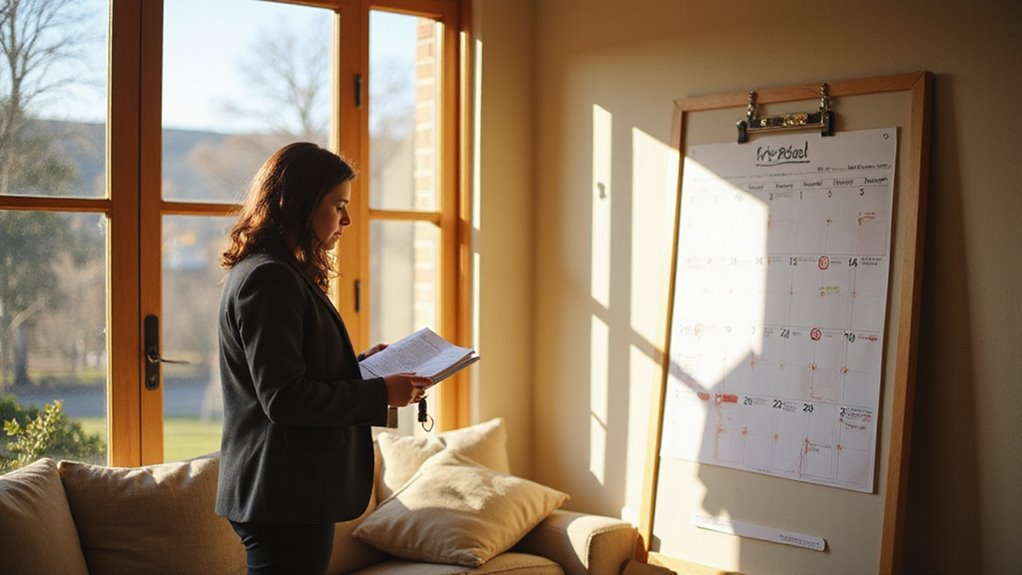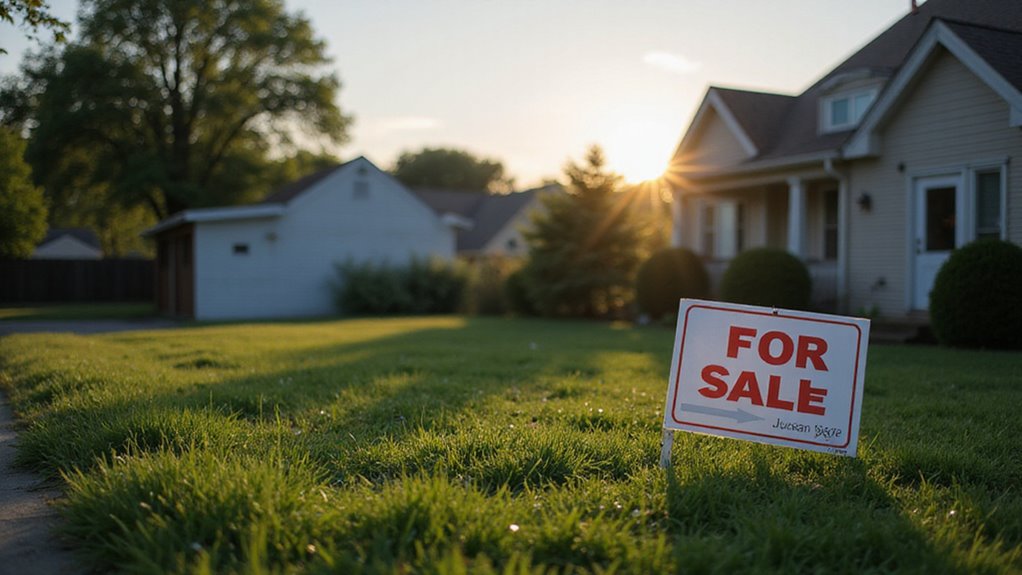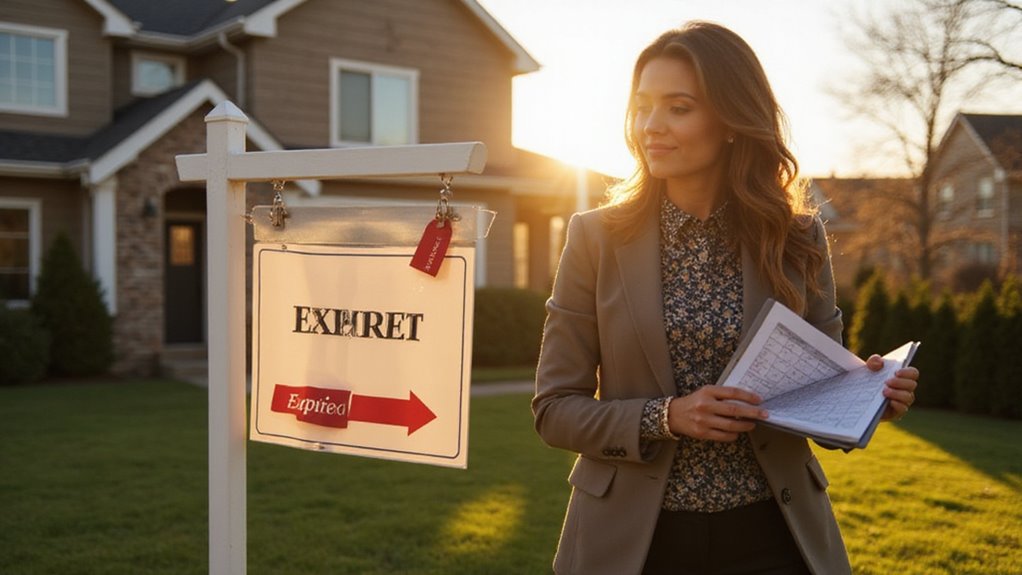When your home listing expires without a sale, figuring out when to relist can be stressful. Many homeowners wonder if relisting right away is the best option. Bad timing can leave your property sitting unsold for months.
Relisting too soon can make your home seem undesirable to buyers. It may signal to agents and buyers that something is wrong with the property. This can lead to fewer showings and even lower offers.
The best time to relist after an expired listing is usually after a short break, often 30-90 days. This gives your home a fresh start and helps attract new interest. This timing can make a big difference in your chances of selling. This blog will explain how to choose the right timing and boost your chances of a successful sale.
Key Takeaways
- Wait at least 30 days before relisting to avoid MLS penalties and reduce the risk of the listing being seen as stale.
- Use the waiting period to address feedback, make repairs, and refresh photos or staging for stronger buyer appeal.
- Analyze current market trends and recent comparable sales to choose the best timing and pricing for relisting.
- Avoid relisting too quickly, as frequent or rapid relisting can lower search visibility and negotiation leverage.
- Time the relist for peak buyer activity, such as spring or early summer, to maximize exposure and selling chances.
Understanding Expired Listings

When your property listing expires, it means the home did not sell during the listing period. The listing is then removed from the market. This requires you to review your selling strategy. In some situations, it’s also important to check for any outstanding debts or liens that could have impacted your sale.
You should check if your price matched the current market trends. If it did not, consider making price changes. Looking at data from similar homes can guide your decisions.
Review your marketing methods to see if they reached the right buyers. If you used digital ads, staging, or professional photos, check their impact. If these methods were not effective, you may need new strategies. Evaluate if your marketing reached the right buyers; ineffective ads or photos mean it’s time to try new strategies.
If you analyze these areas, you can find reasons why the home did not sell. Making the right changes may help your home sell when you relist. These steps improve your chances of a successful sale. Before relisting, you may also want to improve curb appeal to make a stronger first impression on potential buyers.
Common Reasons Listings Expire
When your listing expires, it’s often due to pricing strategy issues or ineffective marketing efforts. Data shows overpriced homes can sit on the market up to 50% longer than competitively priced ones. You need to address both pricing and exposure to improve your chances of a successful relist. In addition, homes with outdated windows may attract lower offers or remain unsold longer, since buyers today prioritize energy efficiency and modern features. Another common reason homes fail to sell is unresolved issues with a clear title, which can delay or even prevent a smooth transaction.
Pricing Strategy Issues
Pricing strategy is often the main reason a listing expires. Setting the price too high can turn away buyers. A price that is too low may create doubts about the property’s value.
Research shows that homes with the right price sell faster and closer to the asking price. If you want better results, you should study local trends and remain flexible with your pricing. Sellers can use different marketing channels to measure buyer interest and make price changes as needed.
You should compare your home to similar properties to set a fair price. If there is little interest, adjust your price to match market feedback. Watching other listings can help you spot changes in buyer demand.
Consider making small price cuts if your home does not sell. Using various marketing tools can help you test different prices. Strategic pricing improves your chance of selling when you relist.
Ineffective Marketing Efforts
A well-priced property can still fail to sell if marketing is weak. Effective marketing is necessary to attract buyers. Without strong visuals and modern strategies, your listing may be overlooked.
Professional photos can increase views by 32%. Virtual staging helps boost buyer interest by 45%. Drone photography raises click-through rates by 58%.
Social media campaigns can reach more targeted buyers. Video walkthroughs increase the time people spend on your listing by 50%. If you use these tools, your property will stand out.
Ineffective marketing limits your property’s potential. Strong marketing can make a noticeable difference in exposure and buyer interest. Consider upgrading your marketing strategy to get better results.
Impact of Relisting Too Soon

If you relist too quickly, you risk triggering algorithmic penalties that can push your property lower in search results. Data shows buyers may also interpret frequent relistings as a sign of desperation, which can weaken your negotiating position. To protect your listing’s visibility and perceived value, you need a strategic relisting timeline.
Reviewing required disclosures is a key part of preparing your paperwork, as incomplete or inaccurate documentation can lead to legal disputes or delays in future transactions. Taking time to review your legal obligations before relisting can also help you avoid potential conflicts and ensure compliance with housing regulations.
Algorithmic Penalty Risks
Relisting an item too soon after removal can trigger search algorithm penalties. These penalties lower your listing’s visibility on real estate platforms. Quick relisting is often seen as a form of manipulation by automated systems.
If a platform detects this pattern, it may suppress your search ranking. Lower rankings mean fewer people will see your listing. Your listing’s performance could be limited for several weeks.
Algorithms may also distrust your updates and ignore new photos. Poor relisting timing can reduce open house attendance and buyer interest. You should always wait the recommended time before relisting to avoid these issues.
Perceived Market Desperation
Relisting your property too soon can make buyers think you are desperate to sell. Buyers may then offer lower prices, expecting you to accept less. This is a common risk when a property appears back on the market quickly.
Luxury buyers expect sellers to be patient and confident. If a luxury property is relisted too fast, it can lose its exclusive appeal. Such haste can weaken your position during negotiations.
For homes needing repairs, relisting without improvements can hurt your chances even more. Buyers may feel there are serious problems if issues are not fixed. This can make the property less attractive.
If you take time to review feedback and make changes, you show buyers you are in control. Waiting before relisting can help maintain your property’s value. This strategy often leads to better offers and stronger final prices.
How the MLS Tracks Expired Listings
The MLS (Multiple Listing Service) keeps a clear record of every property’s status, including when a listing expires. If your listing expires, the MLS updates this status automatically. Agents and brokers can see this information at any time.
MLS tracks important details such as the date your property was first listed and its original price. It also records every price change made during the listing period. The system notes the expiration date and any marketing tools used. When considering your next move, it’s helpful to know that the MLS can also reveal whether the home was sold in as-is condition, which is often important in cash sales.
If you relist your property, the MLS shows gaps between expiration and new listings. Real estate professionals can view all previous marketing efforts, such as virtual tours or drone photos. If you know what is tracked, you can plan your next steps better. Understanding how the MLS documents your home’s sales history is especially important if you’re considering selling FSBO, since your property’s visibility and market perception can be influenced by its listing history.
Typical Waiting Periods Recommended by Agents

Agents usually recommend waiting about 30 days before relisting an expired property. This is because MLS systems track listings and can flag homes that return too soon. If your home reappears quickly, buyers may think it had trouble selling.
A short waiting period lets you update your selling strategy. You could use virtual staging or add drone photos for a fresh look. These updates help your listing stand out when it returns to the market. During this time, it’s also wise to check for any hidden mold locations that might impact buyer perception or the property’s value.
If you wait and improve the listing, you avoid the “stale” label. This makes buyers more interested in your property. Following this advice can lead to a better sale.
Before relisting, it’s also important to make sure all your required paperwork is accurate and complete, as errors or missing documents can cause delays once you find a buyer.
Market Conditions and Their Influence on Timing
Market conditions play a key role in choosing when to relist a property. If the market is crowded, your home may take longer to sell. Economic trends, like job growth, can mean more buyers are ready to purchase. Sellers should watch inventory levels and avoid relisting when many homes are on the market. Lower competition can help your home stand out. If mortgage rates drop, more buyers may look to purchase.
For sellers considering speed and flexibility, some choose cash home buyers for a faster, less stressful transaction. Seasonal changes also matter; spring and early summer usually bring more buyers. Recent sales in your area can show the best price and timing. Local policy changes may affect how buyers act. Always use the latest data to guide your timing. Acting on facts can reduce risk and improve your results. Guesswork should be avoided when making relisting decisions. Additionally, understanding closing costs can help sellers accurately estimate their net proceeds and choose the optimal time to relist.
The Importance of a Market Analysis

You need a thorough market analysis to pinpoint current price trends and determine the right timing for your relisting. By evaluating recent sales data from comparable properties, you’ll gain a clear benchmark for setting a competitive price. This strategic approach lets you align your listing with real-time market dynamics and maximize your powerful return.
When considering a relist, exploring cash home buyers as an alternative can offer a faster, more flexible solution that avoids many of the delays and costs common in traditional sales. It’s also crucial to resolve disputes among heirs before relisting if the property was inherited, as disagreements can delay the selling process and affect your timeline.
Identifying Market Price Trends
To identify market price trends, you need to look at current prices and buyer interest in your area. This helps you understand when to relist your property. If you study the market, you can avoid past mistakes and improve your chance of a quick sale.
You should track the average days similar homes stay on the market. Changes in median sale prices over recent months can signal new trends. If you notice prices rising or falling, adjust your plans accordingly.
Seasonal patterns can change buyer activity, so watch for these trends. A sudden increase in listings may mean more competition. If buyer demand drops or inventory grows, consider adjusting your price or timing.
Evaluating Comparable Property Data
Evaluating comparable property data means looking at similar homes that have sold in your area. These homes should match yours in size, condition, and features. This helps you understand what buyers are currently paying.
You should check the sale prices, days on market, and any price drops for these homes. If a property sold quickly, its features or pricing may be attractive to buyers. Slow sales or big price cuts can reveal what to avoid.
If the market shows lower prices, you may need to adjust your listing. You could also improve your home’s curb appeal or wait for higher demand. Using this data helps you avoid another expired listing and increases your chances of selling.
Freshening Up Your Listing’s Appeal
To make your listing more appealing, focus on updates that attract buyers. If a home sits on the market too long, it may need changes. Simple improvements can help your property gain more attention and sell faster.
Staging your home with new decor can highlight its best features. Professional photos can increase online views and buyer interest. Fresh paint, better lighting, and new fixtures can make the space look newer.
A strong listing description with the right keywords can bring in more buyers. If you improve curb appeal, your home will create a good first impression. Each of these steps can help your listing stand out in a crowded market. Addressing minor repairs or upkeep before relisting can also instil trust in potential buyers and lead to a smoother sale.
Addressing Past Feedback Before Relisting

Addressing past feedback is key before you relist your home. You should read all comments from earlier showings and open houses. These comments help you find problems that stopped buyers from making offers.
Common issues include too much clutter, old décor, or dim lighting. You can fix these by cleaning, updating rooms, or adding better lights. If you invest in professional staging, your home may sell faster.
You should also look at your old listing photos. If the pictures did not show your home’s best features, consider hiring a professional photographer. Better photos often bring more people to view your home.
If you respond to feedback, you show buyers you care about their opinions. This can make your home stand out in the market. Taking these steps increases your chances of a quick and successful sale.
Adjusting Price and Marketing Strategies
Adjusting price and marketing strategies can help your home sell faster. If your home is not selling, you may need to change your approach. Price and promotion are two key factors to review.
You should check recent sales in your area before changing your price. If homes like yours sell for less, consider lowering your price. Even a small price drop can attract more buyers.
Marketing matters too. Use social media ads to reach local buyers. Choose professional photos and virtual tours to show your home at its best.
Update your listing’s description with new highlights. Post your home on several real estate websites. If you make these changes, your home may get more attention and offers.
Timing Your Relist for Maximum Exposure
To maximize your relist’s impact, you need to assess current market activity and identify periods of heightened buyer interest. Strategic listing gaps—often two to four weeks—can refresh your property’s online presence and trigger renewed attention from serious buyers. Use recent sales data and buyer search trends to pinpoint the optimal moment for relaunching your listing.
Assessing Market Activity
Assessing market activity helps you choose the best time to relist your property. Reviewing current trends lets you find when buyers are most active. This can increase your chances of selling quickly.
You should check how long similar homes stay on the market. If homes are selling faster, it might be a good time to relist. Slow sales could mean you should wait.
Consider recent sale prices and how much homes sell for compared to their list price. High sale ratios suggest strong buyer interest. Lower ratios might require you to adjust your strategy.
Monitoring the number of new listings and pending sales each week gives insight into competition. If many homes are listed, buyers have more choices. Fewer listings can help your property stand out.
If open houses nearby are attracting more visitors, your chances of finding buyers improve. Virtual staging can also increase interest in your online listing. Use these trends to decide when to relist for the best results.
Leveraging Listing Gaps
Taking a break before relisting your home can help you attract more buyers. A gap of two to four weeks often resets buyer interest. This strategy can give your property a fresh start in the market.
Use this time to update your listing photos and show any new improvements. New images make your home stand out from previous listings. If you change photos for the season, your listing will feel up-to-date.
Schedule open houses soon after you relist your property. This approach uses the “new” listing status to draw in serious buyers. If you relist during a busy market period, you can get more attention.
Carefully planned listing gaps reduce market fatigue and increase your chances of a successful sale. This approach works well in today’s fast-changing real estate market. It can help you achieve the best price for your home.
The Role of Seasonality in Relisting Decisions
Seasonality affects when you should relist your property. Certain times of year bring more buyers and less competition. Knowing this helps you make better decisions.
Spring and early summer usually have the most buyers. Listings during these months often get more attention. If you want more offers, consider these seasons.
Winter is often slower for real estate sales. Fewer homes are for sale, so your property may stand out. If you need to sell quickly, winter could be a good choice.
School schedules and holidays can change buyer interest. Families often move during school breaks. Plan your listing around these periods for more buyer activity.
Interest rates and economic news can change market trends. If rates drop, buyer demand may rise at any time. Always check local data before deciding when to list.
Analyzing recent sales in your area helps you choose the best time. Local trends may differ from national patterns. If you use local data, your timing will be stronger.
Working With a New Agent or Brokerage
Working with a new agent or brokerage can improve your chances of selling your home. A different agent may offer better strategies and more experience. If your previous listing did not sell, a new approach might make a difference.
National Association of Realtors data shows that homes with professional virtual tours and open houses sell faster. Agents who use these tools can help your home reach more buyers. They may also suggest changes to your marketing plan.
A skilled agent will review why your home did not sell before. They will highlight your property’s best features and adjust your listing. If you choose a team with strong local and online networks, your home will get more attention.
Fresh ideas and effective marketing can help your listing succeed. If you want better results, consider a new agent or brokerage. This change could lead to a successful sale.
Monitoring Buyer Activity After Relisting
You can measure your relisting strategy by tracking buyer activity from the start. If you monitor key data, you will know what works. Simple metrics can show if your changes attract more buyers.
Online views and virtual tour numbers are important to watch. If these numbers rise, your listing is reaching more people. Comparing showing requests before and after relisting can show clear trends.
Buyer feedback gives insight into what buyers like or dislike. If similar objections appear, you may need to adjust your approach. Positive comments can confirm your relisting improvements.
Home staging can make a difference in how fast your home sells. If your home spends less time on the market after staging, your strategy is working. You should also note how quickly offers come in after relisting.
Conclusion
If your listing has expired, it is wise to wait before relisting. A 30-day pause can help avoid penalties and refresh buyer interest. If sellers use this time to make improvements, they often see better results.
If you want a fast sale, we buy houses for cash. This can be a good option if you do not want to wait. Sellers who consider all options can make the best choice for their situation.
If you are ready to sell or need more advice, we are here to help. At OC Real Estate, we offer support for every step of the process. Contact us today to see how we can work together for your best outcome.

